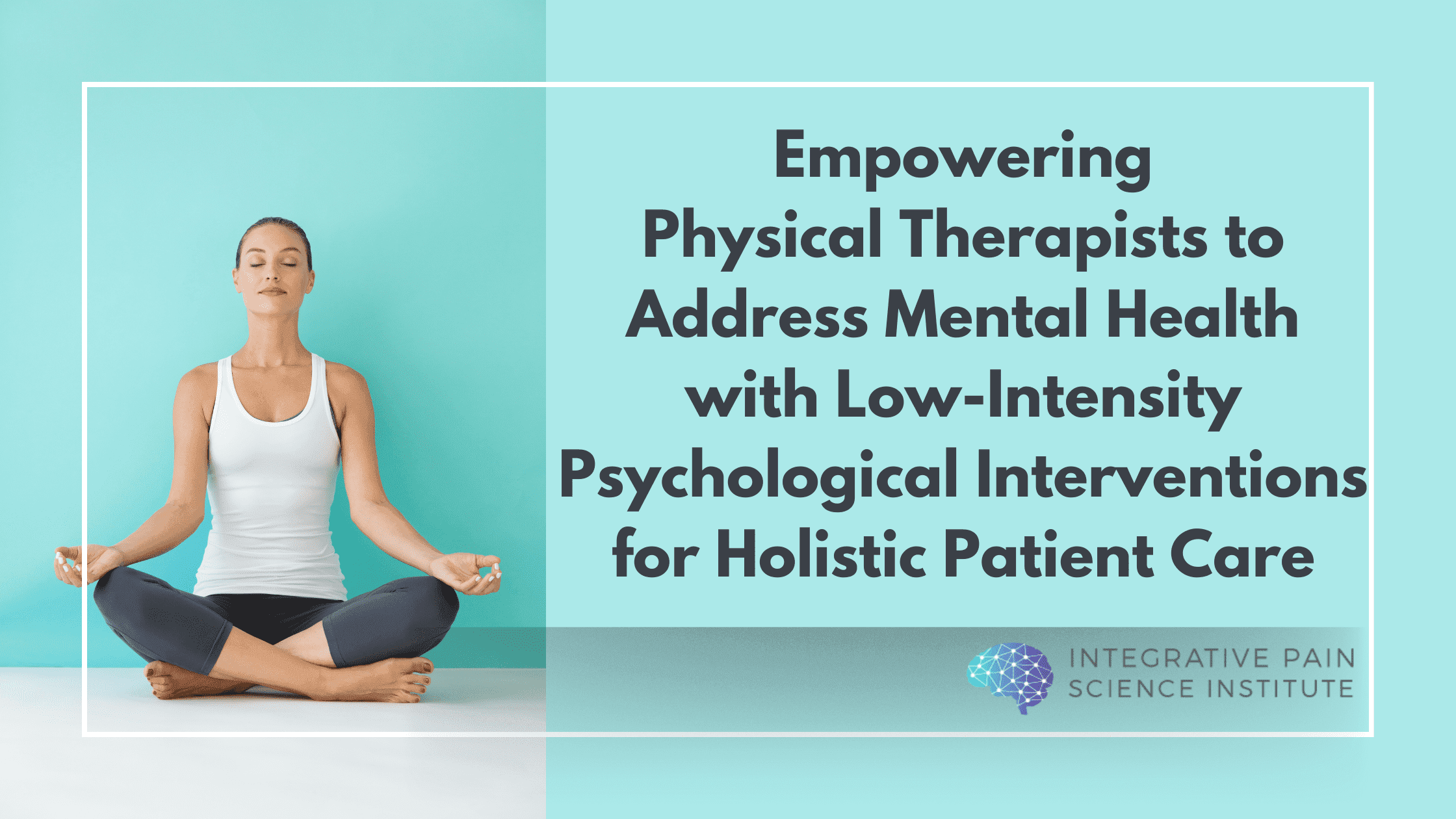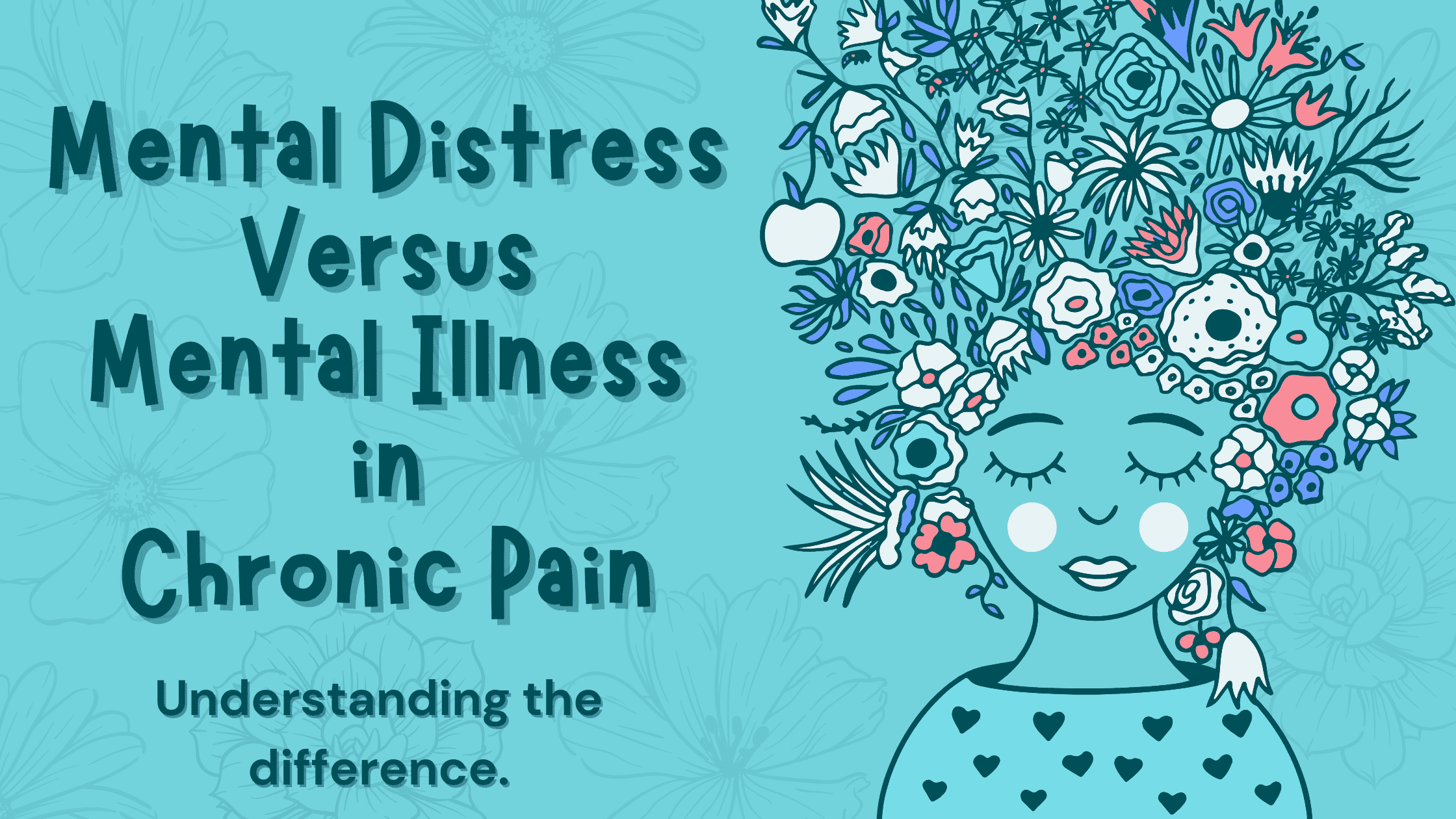Modern pain science has made great strides in uncovering the neurophysiologic mechanisms and cognitive processes that underlie nociception and pain. The field of pain science will continue to grow as government and private interests search for effective pain management strategies, and as consumers demand safe and effective treatment. But is the latest pain science being taught in medical school? And is the delivery of effective pain management in the clinic lagging behind?
Filling the Gap in Pain Education
Pain management represents a significant public health challenge, for several reasons:
Prevalence: Acute pain is one of the most common reasons for visits to the emergency room and complains about pain are common in primary care. Over 100 million Americans live with chronic pain, which costs $560-630 billion per year due to missed workdays and medical expenses (1).

Negative consequences of poor pain management: Pain that is not effectively treated reduces quality of life, and may cause long-term disability. On the other hand, over-reliance on opioids to treat pain, ascribed in part to the inadequate education of prescribers, often leads to adverse side-effects such as nausea, vomiting, and constipation, and may lead to dependence, addiction or death (2).
Access to care: Lack of insurance coverage and the high cost of health care often prevent or delay care, which increases morbidity, hospital stays, and prolongs treatment duration.
Prevention: Pain prevention through federal, state, and private-sector entities and advocacy groups is of utmost importance to reduce health care’s social and economic costs; there is still much to do in this front, as consistent results from these efforts have not yet materialized (3). Currently, government and private insurers cover minimal preventative care.
Over 100 million Americans live with chronic pain, which costs $560-630 billion per year due to missed workdays and medical expenses Click To TweetHow to Improve Pain Education?
To address the gap between knowledge and practice regarding pain science education, multinational pain research groups (4, 5) and professional pain organizations, including the IASP, the British Pain Society, the European Federation of IASP chapters, and the Faculty of Pain Medicine of the Australian and New Zealand College of Anaesthetists, stressed the need to improve pain medicine education for medical students and advocated for early introduction of pain education in medical training (6, 7).
As a result, several pain-focused curricula have been developed. A model for core curriculum developed by the IASP has been applied internationally by universities to educate medical students about pain management.
Have These Efforts Translated Into Greater Inclusion of Pain Science and Pain Education Content in the Curricula of Medical Schools?
This question is addressed in a 2018 article published in the journal Pain Therapy that evaluated the status of Pain Medicine Education for medical students across the world (8). The authors cite global concerns about clinicians’ lack of expertise regarding pain management and education and found:
- Most patients presenting with pain will be treated by a medical practitioner who has not trained as a specialist in pain management.
- Primary care providers and many health professionals have indicated a lack of training to manage complex pain issues, and limited confidence in their ability to provide effective pain treatment
Too Little, Too Narrow, and Not Enough: Pain Education in Medical School
The Pain Therapy study mentioned above reviewed relevant studies on pain medicine education for medical students published between January 1987 and May 2018, which examined the pain-related content of the entire entry-level medical education curriculum. A total of 14 studies, providing data from 383 medical schools in the USA, Canada, UK, Europe, New Zealand, and Australia, met the inclusion criteria. Data was collected from 83% (n = 19) of medical schools in New Zealand and Australia, 81% (n = 104) of schools in USA (2009/2010), 77% (n = 13) of Canadian schools (2009/2010), 96% (n = 27) of schools in the UK (1988), 100% (n = 5) of schools in Finland (1995), and 97% (n = 242) of medical schools in 15 European countries. Most information was obtained from university deans or faculty responsible for medical curricula or pain medicine education. development. No literature on pain medicine education published in the English language was found for Asia, Africa, or South America. The following section describes the main findings of the study (8).

- In the majority of schools, pain medicine was not specifically addressed but taught instead as part of anesthesiology, pharmacology, anatomy, physiology, oncology, and emergency medicine modules.
- Most medical schools in the UK and USA (96%), and Europe (82%) had no compulsory dedicated teaching in pain medicine (versus 14% in France).
- Elective studies in pain medicine were offered by 53% of medical schools in Australia and New Zealand, compared with only 16% of medical schools in the USA (a notable exception being the University of Washington, which offered up to 320 h of elective pain education course opportunities).
Teaching Pain Science
- In Europe, Poland and Finland led the ranking in the median number of hours allocated to teaching pain medicine content, with 39 and 30 h, respectively; The UK devoted 13 h, while Romania and Italy ranked last with 4 h each country. For the 15 European countries assessed, a median of 12 h was allocated for compulsory pain medicine courses.
- Medical schools in Canada and Australia/New Zealand allocated a median of 20 h, distributed within general subject modules.
- In the USA a median of 9 h of pain medicine teaching was computed, with 20% of medical schools reporting less than 5 h of teaching on the topic.
- In general, for all the institutions combined the time allocated to pain medicine teaching was less than 0.5% of the minimum total teaching hours of a medical degree.
Pain Science Topics in the Curriculum
- Neurophysiology, neuroanatomy, and pharmacology of pain were included in the curricula of medical schools in all countries.
- Clinical assessment, non-pharmacological management of pain, multidisciplinary pain management, pediatric pain, geriatric pain, and medico-legal and ethical aspects of pain medicine were less consistently taught among the medical schools evaluated.
- In the USA and Canada, specifically designed pain medicine modules focused on pain assessments, the multi-disciplinary team, medical and non-medical management of pain, therapeutic relationship, and development of a comprehensive treatment plan.
Teaching Methods
- The most common teaching methods used by medical schools were lectures and seminars. Case-based instruction (applied intensely in the UK, by 78% of medical schools) was the next most frequently employed teaching method.
- Clinical placements were a part of the pain medicine teaching in 84% of medical schools in Australia and New Zealand, 48% of schools in the UK, 26% of schools in Europe, and one individual course in the USA.
- Interprofessional learning (IPL) was infrequently included in most schools’ pain curricula.
- A variety of innovative teaching methods were included in specific pain courses developed in Canada (The Interfaculty Pain Curriculum at the University of Toronto) and the USA (the John Hopkins University; the University of Washington) (9, 10, 11). These comprehensive programs applied IPL methods and emphasized the affective and cognitive dimensions of pain.
Assessment Methods
- Written examinations were the most common assessment method for pain medicine for all medical schools assessed.
- In Europe, 24% of medical schools used assignments, while 10% used practical or clinical assessments, presentations, group work, or problem-based learning.
- The Objective Structured Clinical Examination (OSCE), which assesses clinical competence in a simulated work environment, was used by 32% of schools in Australia and New Zealand (12).
Dr. Tatta’s simple and effective pain assessment tools. Quickly and easily assess pain so you can develop actionable solutions in less time.
How to Improve Pain Education
Despite scientific and therapeutic advances and intense advocacy by pain organizations internationally, both acute and chronic pain management remains a challenge in clinical routine practice (13, 14). For practicing health professionals, engaging in continuing education and recognizing pain as a biopsychosocial process will serve to expand their proficiency in pain management. For students in healthcare professions, deeper exposure to pain management concepts, Integrative Pain Care principles, case-based instruction, and a strong focus on prevention and wellness as primary care strategies should allow them to enter the professional field with the necessary proficiency in specific pain care competencies.
Pain education and pain science models require further development and integration into pre-licensure training for healthcare students. Another step towards ensuring better skills in pain medicine in new graduates would be addressing existing gaps identified in the United States Medical Licensing Examination (USMLE) that relate to safe and effective pain management, the context of pain, and opioid safety (15).
How do you think we can improve pain education for future pain practitioners?
Leave me a comment on the Institute Facebook page!
REFERENCES:
1 – Reuben, D. B., Alvanzo, A. A., Ashikaga, T., Bogat, G. A., Callahan, C. M., Ruffing, V., & Steffens, D. C. (2015). National Institutes of Health Pathways to Prevention Workshop: the role of opioids in the treatment of chronic pain. Annals of internal medicine, 162(4), 295-300.
2- Sinatra, R. (2010). Causes and consequences of inadequate management of acute pain. Pain medicine, 11(12), 1859-1871.
3- Institute of Medicine (US) Committee on Advancing Pain Research, Care, and Education. Relieving Pain in America: A Blueprint for Transforming Prevention, Care, Education, and Research. Washington (DC): National Academies Press (US); 2011. 6, A Blueprint for Transforming Pain Prevention, Care, Education, and Research. Available from: https://www.ncbi.nlm.nih.gov/books/NBK92514/
4- Fishman, S. M., Young, H. M., Lucas Arwood, E., Chou, R., Herr, K., Murinson, B. B., … & Bakerjian, D. (2013). Core competencies for pain management: results of an interprofessional consensus summit. Pain Medicine, 14(7), 971-981.
5- International Pain Summit of the International Association for the Study of Pain. (2011). Declaration of Montreal: declaration that access to pain management is a fundamental human right. Journal of pain & palliative care pharmacotherapy, 25(1), 29-31.
6- Lippe, P. M., Brock, C., David, J., Crossno, R., & Gitlow, S. (2010). The first national pain medicine summit—final summary report. Pain Medicine, 11(10), 1447-1468.
7- European Federation of IASP Chapters. The Pain Management Core Curriculum for Undergraduate Medical Education. https://www.europeanpainfederation.eu/core-curriculum/ Accessed October 12, 2018
8- Shipton, E.E., Bate, F., Garrick, R., Steketee, C., Shipton, EA., & Visser, EJ. (2018). Systematic Review of Pain Medicine Content, Teaching, and Assessment in Medical School Curricula Internationally. Pain Therapy, Jul 30. doi: 10.1007/s40122-018-0103-z. [Epub ahead of print]
9- Watt-Watson, J., Hunter, J., Pennefather, P., Librach, L., Raman-Wilms, L., Schreiber, M., … & Mock, D. (2004). An integrated undergraduate pain curriculum, based on IASP curricula, for six health science faculties. Pain, 110(1-2), 140-148.
10- Murinson, B. B., Nenortas, E., Mayer, R. S., Mezei, L., Kozachik, S., Nesbit, S., … & Campbell, J. N. (2011). A new program in pain medicine for medical students: integrating core curriculum knowledge with emotional and reflective development. Pain Medicine, 12(2), 186-195.
11- Tauben, D. J., & Loeser, J. D. (2013). Pain education at the University of Washington School of Medicine. The Journal of Pain, 14(5), 431-437.
12- Shipton, E. E., Bate, F., Garrick, R., Steketee, C., & Visser, E. J. (2018). Pain medicine content, teaching and assessment in medical school curricula in Australia and New Zealand. BMC medical education, 18(1), 110.
13- Correll, D. J., Vlassakov, K. V., & Kissin, I. (2014). No evidence of real progress in treatment of acute pain, 1993–2012: scientometric analysis. Journal of Pain Research, 7, 199–210.
14- Colvin LA, Stein A, Smith BH. (2014). Managing chronic pain: a clinical challenge: new SIGN guidelines provide a practical evidence-based approach and identify research gaps. Br J Anaesth, 112(1):9-12.
15- Fishman, S. M., Carr, D. B., Hogans, B., Cheatle, M., Gallagher, R. M., Katzman, J., … & Rosenquist, R. W. (2018). Scope and nature of pain-and analgesia-related content of the United States Medical Licensing Examination (USMLE). Pain Medicine, 19(3), 449-459.



